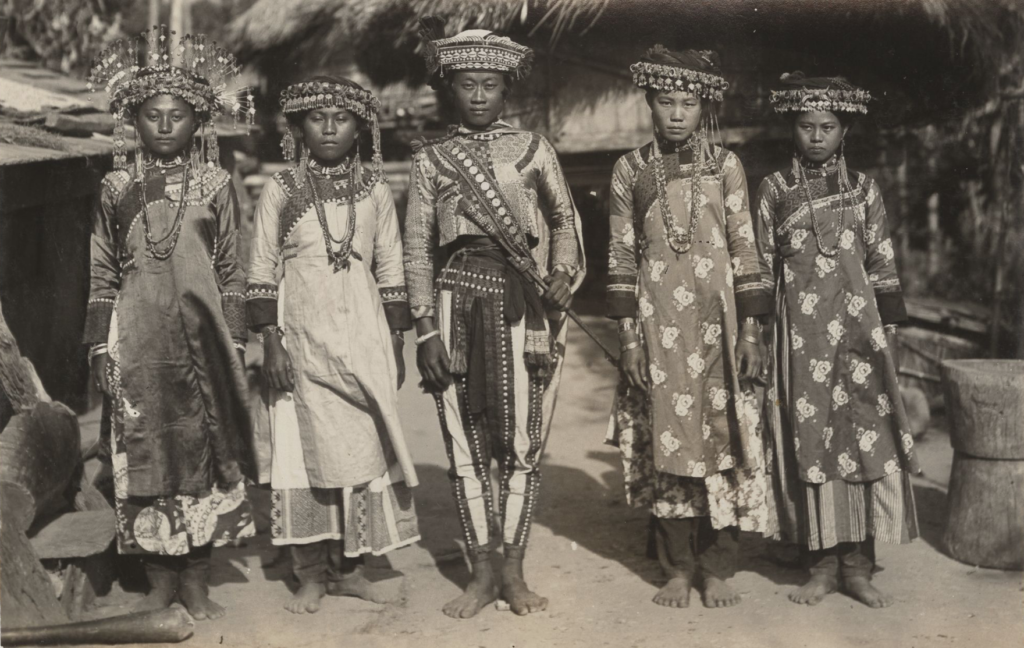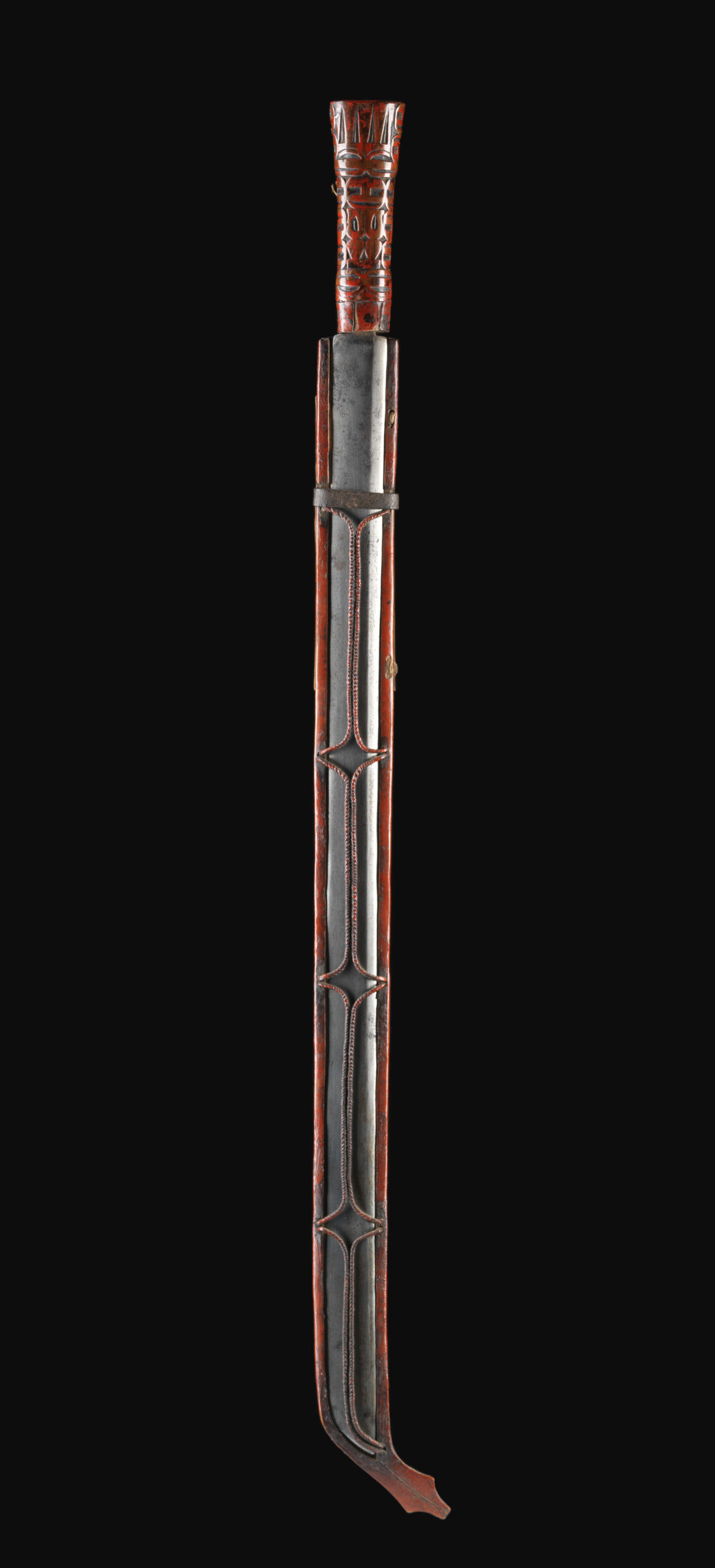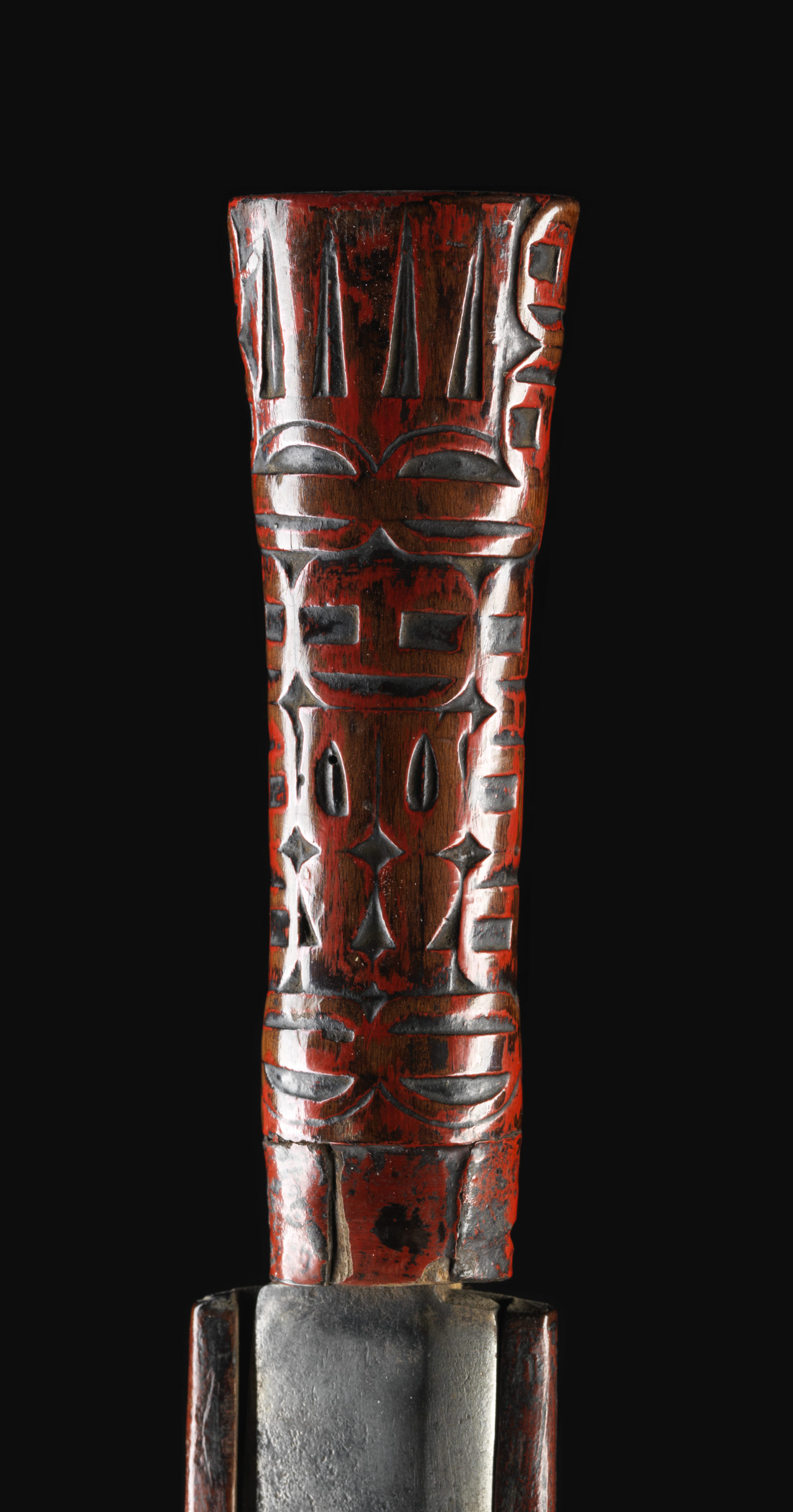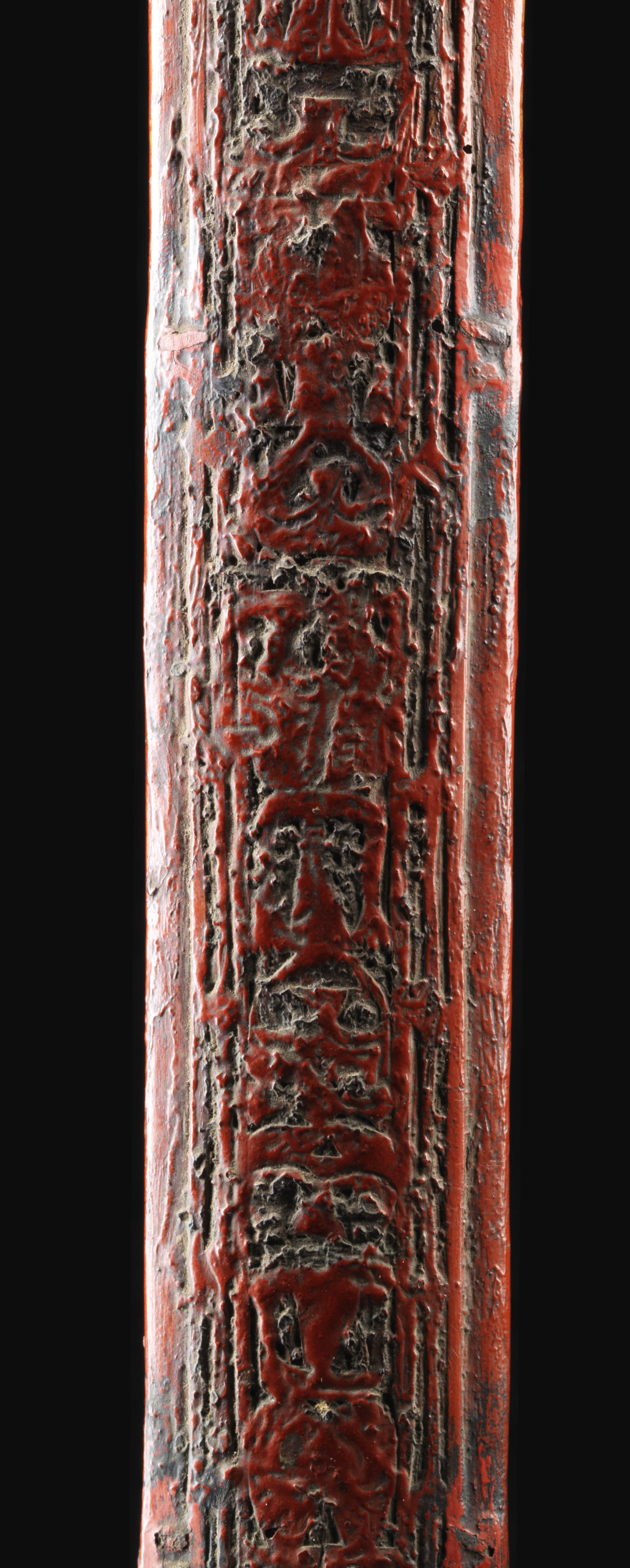Sword „takit“
| Object | Sword „takit“, „rinadrug“ |
| Culture | South Formosa, Paiwan (Rukai, Puyuma) |
| Time | 18/19th century |
| Dimensions | Length 79 cm |
| Material | Wood, steel, non-ferrous metal, red lacquer, black lacquer, rattan |
The object presented here belongs to the group of takit and embodies the traditional culture of the ethnic groups of southern Taiwan, especially the Rukai and Paiwan, whose blade objects are essentially the same and cannot be reliably differentiated today. Takit are traditional blade objects of the Paiwan ethnic groups on Formosa.
The straight, symmetrical, red-painted wooden handle represents a stylised standing figure with a high headdress. This motif can also be seen in direct connection with Bronze Age models; very similar handles can already be found in connection with ancient Austronesian archaeological sites. The scabbard also shows a series of standing figures on the front, with the bent foot of the scabbard ending in a snake’s head. The snake Mura is the holy animal of the Paiwan aristocracy and is omnipresent on takit knives. The back of the wooden scabbard is fitted with thin, artistically twisted iron rods that hold the blade in position. It is remarkable with what precision the blade fits into the recess provided for it. In the area of the scabbard mouth there is a separately applied element on which six raised, stylised human heads can be seen in a row: a clear indication of its function in connection with head hunting. Why one of the heads “lies” while the others “stand” is not clear.
This is a very long example of a takit. The strong, almost straight, single-edged blade with the raised, short back point is made of refined steel and has a distinct shadow of hardness along the edge. The metal structure is of a fine texture and suggests mastery of iron or steel working. The asymmetrical cross-section of the blade is typical of Paiwan blades. This represents an interesting parallel to blades from Borneo (mandau) and to blades from the central and northern Philippines (Luzon, Visayas), which is hardly coincidental. In principle, the shape of the blade corresponds largely to Chinese, Korean and Japanese blades from the Han to the T’ang dynasty; in Tibetan and Bhutanese blades the shape has remained unchanged. This suggests that the form of the takit was brought to the island by the Han-temporal immigrants about 2.000 years ago.


Paiwan man with takit and four women in official attire and headgear in Pingdong County.
http://hdl.handle.net/10385/fq977v889
Supplementing Literature Back to room view







